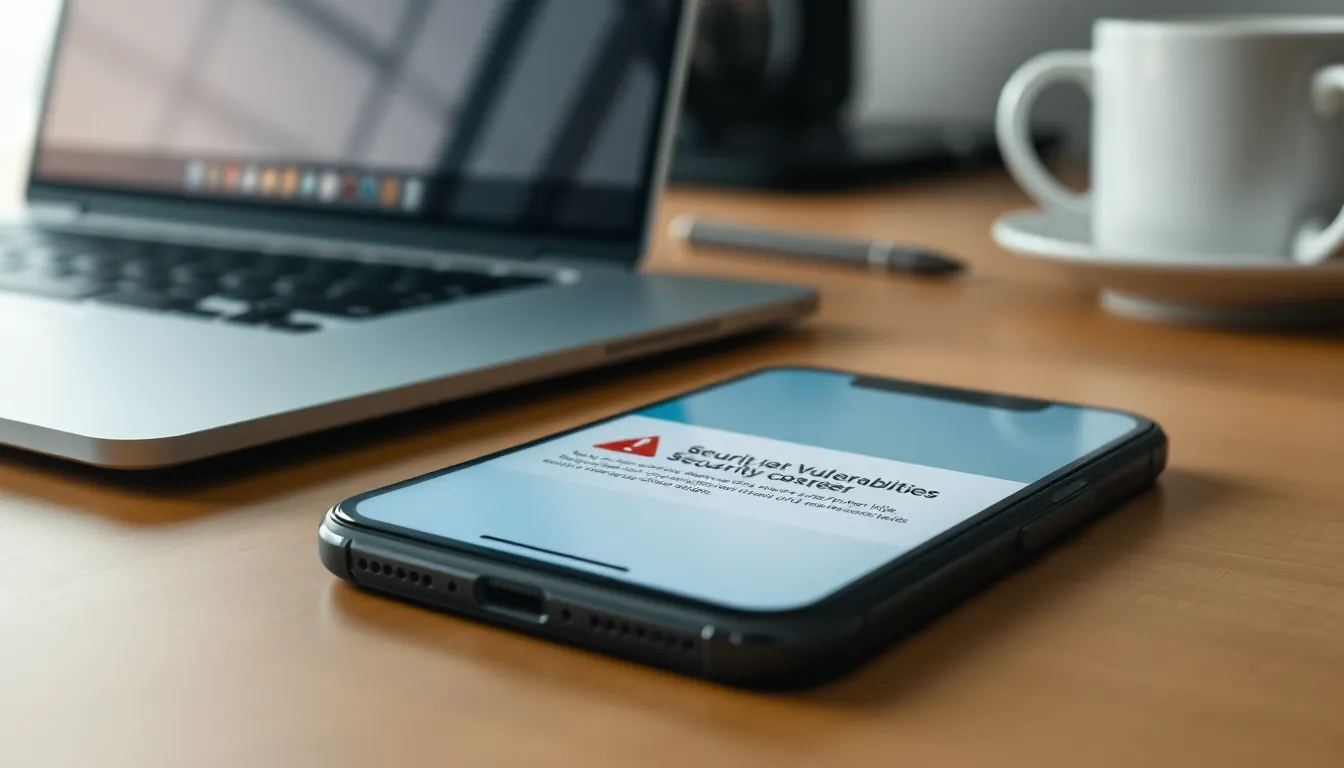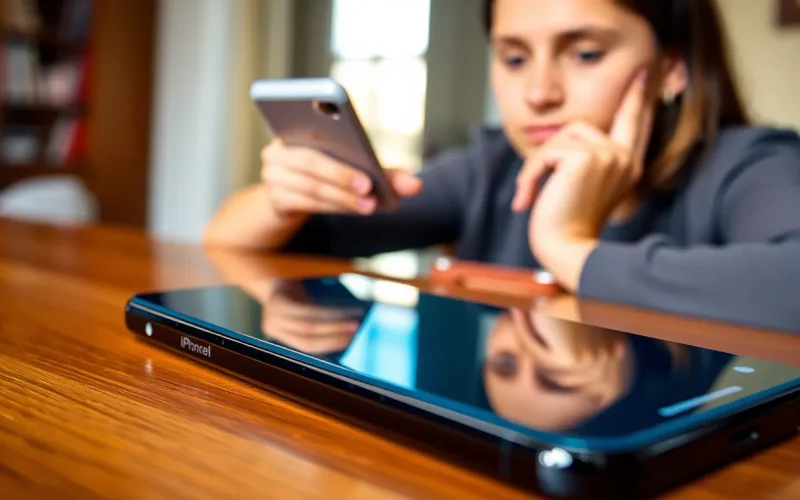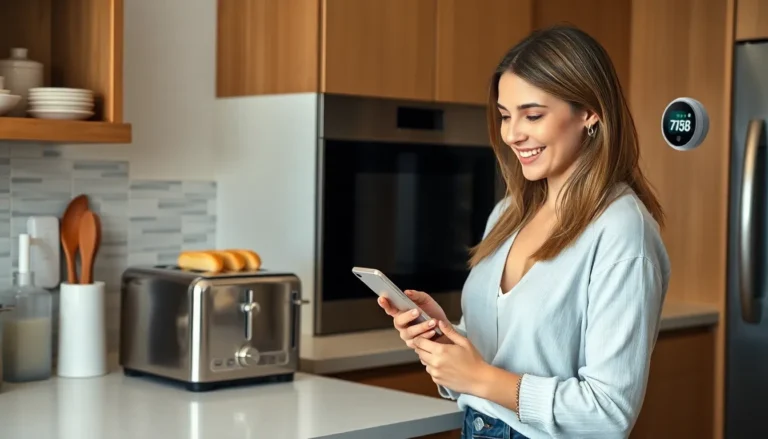Table of Contents
ToggleIn a world where smartphones are practically an extension of ourselves, the iPhone stands out as a fortress of security. But just how hard is it to hack one? Picture this: a tech-savvy ninja trying to break into a vault protected by laser beams and a guard dog named Fluffy. That’s what hacking an iPhone can feel like.
With Apple’s relentless focus on security features like Face ID and end-to-end encryption, it’s no wonder many wonder if their data is safe. But don’t let the tech jargon scare you; understanding the challenges of hacking an iPhone can be both enlightening and entertaining. So grab your popcorn and get ready to dive into the wild world of smartphone security, where the stakes are high and the hackers are… well, let’s just say they’re not as cool as they think.
Overview of iPhone Security
iPhone security relies on advanced technology and user-friendly features that protect sensitive information. Apple designed the iPhone with multiple layers of security, including hardware and software components. Face ID uses facial recognition, allowing users to unlock their devices and access apps securely. This feature processes facial data locally on the device, minimizing the risk of exposure.
Touch ID offers another secure method through fingerprint recognition. Users can authenticate purchases and log into apps seamlessly. Both features are integrated with the iPhone’s secure enclave, a dedicated processor that safeguards personal data.
Encryption plays a critical role in iPhone security. Data stored on the device is encrypted, ensuring only authorized users can access it. End-to-end encryption protects messages sent through iMessage and FaceTime, preventing unauthorized interception.
Apple also emphasizes software updates. Regular updates address vulnerabilities and enhance security, making it essential for users to keep their devices updated. This practice reduces the risk of exploitation by malicious actors.
Privacy is a core principle for Apple, evident in features like App Tracking Transparency. Users can control which apps track their activity, reinforcing their autonomy over personal data.
IPhone security showcases a commitment to user protection through innovative technologies and robust privacy measures. These features create a secure environment that deters unauthorized access and enhances overall user trust.
Common Hacking Methods

Various methods exist for attempting to hack an iPhone. Understanding these techniques provides insight into the challenges of breaching iPhone security.
Jailbreaking
Jailbreaking represents a popular method some use to bypass Apple’s security restrictions. Removing software limitations allows users to access unauthorized applications and features. This approach exposes the device to vulnerabilities, as it disables critical security protocols. Often, ethical hackers explore jailbreaking to demonstrate potential risks. Users who jailbreak their devices can face additional security threats, yet some may prioritize customization over safety.
Phishing Attacks
Phishing attacks exploit social engineering tactics to deceive iPhone users. These attacks typically involve fake emails or messages posing as legitimate entities. Users may unknowingly provide personal information or login credentials. Identifying phishing attempts requires vigilance, especially given the sophistication of some methods. Recognizing red flags such as poor grammar or suspicious links reduces the risk of falling victim to these schemes.
Malware and Spyware
Malware and spyware present significant threats to iPhone security. While Apple’s stringent App Store guidelines limit these risks, they still exist. Users may unintentionally download malicious software through unofficial channels. Malware can capture sensitive information, while spyware secretly monitors user activities. Regularly updating iOS helps protect against known vulnerabilities associated with these threats. Awareness and education about potential malware can enhance overall security.
Security Features of iPhones
The iPhone incorporates various powerful security features that protect user data from unauthorized access. These features represent Apple’s dedication to maintaining a secure device experience.
Encryption
Encryption functions as a cornerstone of iPhone security. All data stored on the device is encrypted, ensuring that only authorized users can access it. Messages sent via iMessage and FaceTime use end-to-end encryption, which means even Apple cannot access the content. This high level of security makes data interception significantly challenging. By maintaining strict encryption standards, Apple guarantees that users retain control over their sensitive information.
Face ID and Touch ID
Face ID and Touch ID offer secure ways to unlock devices and authenticate purchases. Face ID uses advanced facial recognition technology, while Touch ID relies on fingerprint scanning. Both methods utilize the iPhone’s secure enclave, which stores biometric data safely. Not only do these methods enhance user convenience, but they also bolster overall security. Unauthorized access becomes exceedingly difficult, as both features require unique biological traits that are incredibly hard to replicate.
Regular Software Updates
Regular software updates play a pivotal role in iPhone security. These updates fix vulnerabilities discovered since the previous release, ensuring devices remain resilient against emerging threats. Users receive notifications for available updates, making it easy to stay informed. By prioritizing timely updates, Apple significantly reduces the risk of exploitation from malware and hacking attempts. This proactive approach fortifies the device’s defenses, making it more challenging for potential attackers to breach security.
Factors Affecting iPhone Vulnerability
iPhone security varies based on several factors. Understanding these elements allows users to better protect their devices from potential threats.
User Behavior
User behavior significantly impacts iPhone vulnerability. Avoiding risky practices, like clicking on suspicious links or sharing personal information, minimizes exposure to phishing attempts. Ignoring software updates can lead to security risks, as updates often address known vulnerabilities. Furthermore, utilizing strong passwords for accounts and enabling two-factor authentication adds an extra layer of protection. Users opting for jailbreaking may unknowingly expose their devices to malware or unauthorized access. Practices like backing up important data and monitoring app permissions also enhance overall security.
Device Age and Model
Device age and model influence the level of security. Newer iPhone models incorporate advanced security features, such as improved encryption methods and biometric authentication technology. Older models may lack these features, making them more vulnerable to attacks. Apple typically provides iOS updates for devices for several years, enhancing protection. Devices that no longer receive software updates may be at greater risk. Considering the option to upgrade can bolster security, as newer models include safeguards against emerging threats and vulnerabilities. Selecting a recent model ensures access to the latest security technologies, maintaining robust protection against hacking attempts.
Hacking an iPhone isn’t just a walk in the park. With its advanced security features and Apple’s unwavering commitment to user privacy, it presents a formidable challenge to potential hackers. The integration of technologies like Face ID and end-to-end encryption significantly enhances data protection.
Users can further bolster their security by staying informed about potential threats and adopting best practices. Regular software updates and strong authentication methods play a crucial role in safeguarding personal information. By understanding the complexities of iPhone security, users can confidently navigate the digital landscape, knowing their devices are equipped to resist unauthorized access.





